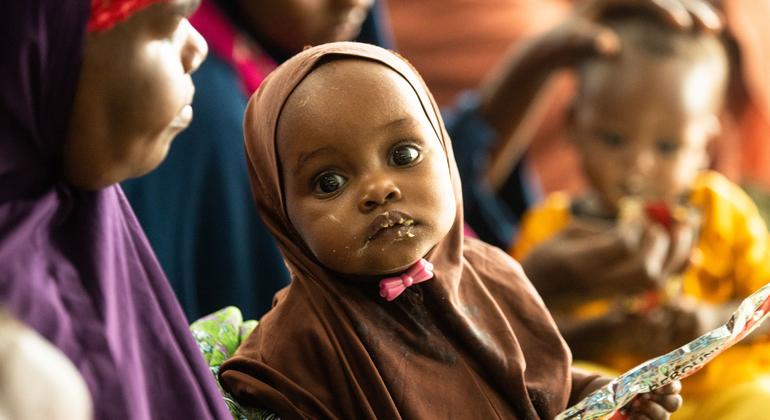Somalia: Urgent support needed for rural areas facing famine

However, there is still time to meet the needs of rural communities who are among those most at risk, the UN agency said, adding that greater investment in resilience and life support is still needed to break the cycle. of family
Etienne Peterschmitt, FAO Representative in the country said “Stable levels of support in scale will be needed well between the middle to the end of 2023, if we are to prevent, not just stop the famine.
Millions are facing hunger
Somalia is teetering on the brink of famine due to a historic drought caused by five consecutive failed monsoons, spiraling food prices and escalating conflict.
Nearly two million people are expected to be in IPC 4 emergency situations between January and March next year, rising to 2.7 million by June.
Up to 727,000 could face catastrophic food insecurity by mid-year, meaning starvation and death.
‘Real work’ is required
Mr. Peterschmitt described the situation in Somalia as dire.
Although current levels of humanitarian aid are helping to avoid what he calls “extreme consequences”, they are not enough to stop the threat of famine for more than a few months at a time.
“People are dying at IPC Level 4. Yet, there is still a focus on the declarations of hunger as a trigger for action,” he said.
“Real action needs to be taken not only to help communities meet their immediate needs, but also to help them improve their livelihoods and build resilience in the face of climate crises and economic shocks, prepare them for whatever the future may bring.”
Herd protection
The unprecedented drought in the Horn of Africa is the worst in recent history, according to the UN humanitarian affairs office, OCHA.
Rural agriculture and herders, as well as displaced communities who come largely from rural areas, are among those most at risk of famine.
Their survival depends on the survival of their herds, and their ability to cultivate, the FAO says, both of which have been hampered by drought.
“Their children’s diet is linked to the health and productivity of their animals. It cannot produce milk, those animals have been dying at an alarming rate for the last year,” the agency added.
Cost-effective aid
FAO says it is important to save livestock, and keep them fed and healthy, as they are the only source of food and income for many rural areas.
Keeping grazing livestock reduces the risk of acute malnutrition by up to 11 per cent among pastoralist households, according to preliminary findings from an upcoming study in Africa View.
Also, providing this assistance is cheap, averaging about 40 cents per goat, compared to $40 to replace the animal.
Reach vulnerable areas
Helping rural livelihoods saves lives, says FAO. This support helps people stay in their homes when it is safe for them to do so and paves the way for future recovery.
The current lack of substantial funding for this support, and for climate-resilient food production and development priorities, poses major challenges, making communities vulnerable to climate and economic shocks.
In the past eight months, FAO reached more than 700,000 people in 35 regions with money through its Fraud Prevention Scale Program.
More than 40,000 people received seeds, animal feed, fertilizers and other agricultural inputs during this period, 11 million animals were cared for, and 27 million liters of water were transported to remote areas.
Over $24 million in cash, in addition to livelihood assistance, has been provided to rural areas most affected by the famine.
FAO plans to reach more than one million people in the coming months but will need additional funds for its activities, including to help hard-to-reach and inaccessible rural areas.







